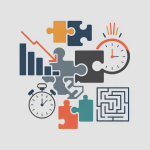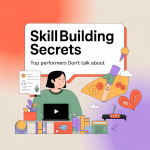
Continuous Learning: The Indispensable Compass in a World of Constant Change
In an era defined by relentless innovation and paradigm-shifting advancements, the notion of “graduating” from learning has become an anachronism.
The world, particularly the professional landscape, is a dynamic, ever-evolving ecosystem.
With the constant development of new technologies, methodologies, and even entirely new industries, the willingness and ability to learn and grow continuously are not merely beneficial traits; they are indispensable to keep up with changes, maintain competitiveness, and even thrive amidst unprecedented flux.
The New Normal: Why Continuous Learning Isn’t Optional
The forces driving the imperative for continuous learning are multifaceted and interconnected:
-
Accelerated Technological Advancement: From artificial intelligence and machine learning to blockchain, quantum computing, and advanced biotechnologies, the pace at which new technologies emerge and mature is staggering. These innovations don’t just optimize existing processes; they often fundamentally reshape industries, create new job roles, and render old skills obsolete. Without continuous learning, individuals and organizations risk being left behind, their skills and offerings becoming irrelevant.
-
Globalization and Hyper-Competition: The interconnectedness of the global economy means competition is no longer confined to local markets. Businesses and professionals compete on a global scale, where excellence and efficiency are paramount. Continuous learning fosters innovation, improves problem-solving abilities, and enhances overall productivity, providing a crucial edge in this highly competitive environment.
-
Changing Nature of Work: The rise of automation, the gig economy, and remote work models demand adaptability and a broader skill set. Jobs are less about repetitive tasks and more about critical thinking, creativity, collaboration, and continuous problem-solving – skills that are honed and updated through ongoing learning.
-
Knowledge Doubling Curve: While difficult to quantify precisely, the concept of a rapidly shrinking “knowledge doubling time” highlights the exponential growth of information. What was once considered cutting-edge knowledge can quickly become foundational, or even outdated. Continuous learning is the only way to navigate this deluge of information and extract relevant, actionable insights.
-
Personal and Professional Fulfillment: Beyond the practical necessities, continuous learning contributes significantly to personal and professional fulfillment. It fosters intellectual curiosity, expands horizons, boosts confidence, and opens doors to new opportunities. Stagnation, conversely, can lead to boredom, disengagement, and a feeling of being stuck.
The Pillars of Continuous Learning: A Holistic Approach
Effective continuous learning isn’t just about taking a course or reading a book; it’s a mindset and a set of practices woven into the fabric of one’s daily life. Key pillars include:
-
Cultivating a Growth Mindset: This foundational element, popularized by Carol Dweck, is the belief that abilities and intelligence can be developed through dedication and hard work. Individuals with a growth mindset embrace challenges, learn from failures, and see effort as a path to mastery. This contrasts sharply with a fixed mindset, where abilities are seen as innate and unchangeable, leading to a fear of failure and resistance to new learning.
-
Self-Directed Learning: While formal education has its place, continuous learning is largely driven by individual initiative. This involves identifying knowledge gaps, setting learning goals, seeking out resources (online courses, books, articles, podcasts, webinars), and actively engaging with the material.
-
Experiential Learning and Application: Learning is most impactful when it’s applied. Continuous learners actively seek opportunities to put new knowledge into practice, whether through personal projects, professional assignments, or volunteering. This hands-on experience solidifies understanding and reveals areas for further learning.
-
Networking and Collaboration: Learning from others is an incredibly powerful tool. Engaging with peers, mentors, and experts through professional networks, communities of practice, and collaborative projects provides diverse perspectives, insights, and opportunities for shared learning.
-
Feedback and Reflection: Regularly seeking constructive feedback on performance and progress is crucial for identifying areas for improvement. Equally important is dedicated time for reflection – analyzing experiences, lessons learned, and how new knowledge can be integrated more effectively.
-
Embracing Discomfort and Failure: True growth often occurs outside of one’s comfort zone. Continuous learners are willing to tackle new challenges, even if it means making mistakes. They view failures not as setbacks, but as valuable learning opportunities that refine understanding and build resilience.
Practical Strategies for Fostering Continuous Learning
For individuals and organizations alike, there are concrete steps that can be taken to cultivate a culture of continuous learning:
For Individuals:
- Dedicated Learning Time: Schedule specific blocks of time each week for learning, treating it with the same importance as other professional commitments.
- Curate Learning Resources: Identify reputable sources for information and skill development relevant to your goals (e.g., Coursera, edX, LinkedIn Learning, specific industry blogs, academic journals).
- Set SMART Goals: Define specific, measurable, achievable, relevant, and time-bound learning objectives.
- Track Progress: Monitor your learning journey to stay motivated and identify areas where you might need to adjust your approach.
- Join Professional Communities: Engage with online forums, local meetups, and industry associations to learn from and connect with peers.
- Seek Mentorship: Find experienced individuals who can provide guidance, share insights, and offer constructive feedback.
- Practice Active Learning: Don’t just passively consume information. Take notes, ask questions, explain concepts to others, and apply what you learn.
- Embrace Side Projects: Work on personal projects that allow you to experiment with new technologies or skills in a low-stakes environment.
For Organizations:
- Culture of Learning: Senior leadership must champion and visibly demonstrate a commitment to continuous learning. This includes providing resources, recognizing learning efforts, and integrating learning into performance reviews.
- Accessible Learning Platforms: Invest in and promote access to online learning platforms, internal training programs, and professional development courses.
- Time and Resources: Allocate dedicated time and budget for employee learning and development. This could include paid time off for courses, tuition reimbursement, or internal workshops.
- Internal Knowledge Sharing: Encourage and facilitate knowledge sharing through brown bag lunches, internal wikis, mentorship programs, and cross-functional teams.
- Feedback and Coaching: Implement robust feedback mechanisms and provide regular coaching to help employees identify areas for growth and develop new skills.
- Learning from Mistakes: Foster an environment where mistakes are viewed as learning opportunities rather than failures, encouraging experimentation and calculated risk-taking.
- Reward and Recognition: Acknowledge and reward employees who actively engage in continuous learning and apply new skills to their work.
- Skills Gap Analysis: Regularly assess current and future skill needs to proactively identify training and development priorities.
The Future Belongs to the Continuous Learner
In a world characterized by unprecedented change, the ability to learn and adapt continuously is no longer a competitive advantage; it is a fundamental requirement for survival and prosperity.
Individuals who embrace continuous learning will be more resilient, adaptable, and innovative, opening themselves to new opportunities and greater professional satisfaction.
Organizations that foster a robust culture of continuous learning will be better equipped to navigate disruption, maintain their competitive edge, and drive sustainable growth.
Continuous learning is not a destination; it is a lifelong journey, an indispensable compass guiding us through the uncharted territories of the future.
By embracing it, we equip ourselves not just to keep up with change, but to actively shape the world to come.


